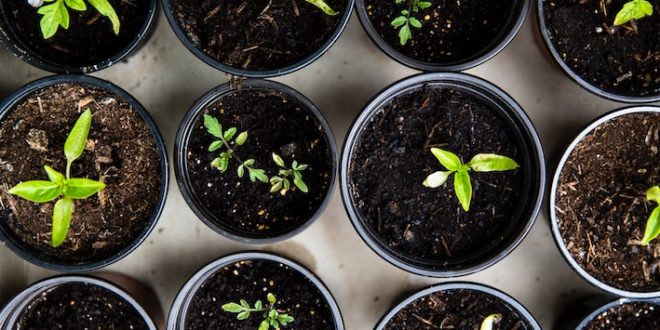Spring is on our doorstep, and seeds haven’t got any cheaper. In this season of seed-sowing, follow these 11 tips to make sure you sow successfully, first time!
1. Chit when it’s chilly
Not everyone’s spring comes in September. If seeds fail to germinate because your soil is still too chilly, chit them in the warmer indoors, instead (chitting is the art of germinating seeds before they go in the ground). To chit, lay the seeds on a damp paper towel, placed in a saucer. Cover with another damp paper towel. Keep everything damp, but not moist. When seeds have germinated, use tweezers to transfer them into the ground or a container of potting mix.
2. Love’n the light
Not all seeds like to germinate in darkness. Some require light to germinate successfully. Read seed packets carefully before sowing!
3. The ‘half’ hack
Unless a seed grows best when uncovered, aim to cover it with just half its own depth in soil. This may mean just the tiniest sprinkle of dirt!
4. Packing a punch
Some seeds, such as beetroot and silver beet, aren’t one seed at all – they’re actually clusters of 3-4 seeds, fused together. If sowing clusters directly in the garden, space them out further than you would single seeds. Better still, sow them into seed raising containers then transplant the resulting seedlings into the garden.
5. It’s a wrap!
Speed up germination by popping containers of seed into a plastic bag and placing them on a sunny window ledge. Clip the bag closed at night to lock in warmth but keep it open at one end during the day so the seeds don’t ‘cook’.
6. Hot stuff
Most seeds don’t require light to germinate – but they do appreciate warmth. Sow your seeds into a container, then place the container on top of your hot water cylinder. Check daily, and shift the container into the light the moment you notice signs of germination.
7. Quirky car trick
Greenhouses are a great heat spot in which to germinate seeds, but if you don’t have one, the next best thing is your car. Park it in a sunny spot, and place your container of seeds on the dashboard where the sun will reach it. The warmth inside the car will have your seeds popping up through the soil in no time at all (just remember to place the container on the floor of the car before you drive off!)
8. Take the temperature
Different seeds prefer different soil temperatures to germinate, and will often rot in the ground or be eaten by insects while they wait for that temperature to be reached. Give seeds the best chance of germinating by checking soil temperature before you sow. To do this, use a soil thermometer, but if you don’t have one, an oven or personal thermometer will do. Gently push it into the ground to a depth of 7-10 centimeters.
9. Raising them right
If spring arrives too slowly in your region, warm up the soil by hoeing it into ridges (if possible, one side of the ridge should be north-facing). Leave the ridges for a few days, then sow into them. The ridges will be warmer than the surrounding soil because they will have drained thoroughly – and dry soil is always warmer than moist soil.
10. Steady as you go
Seeds germinate best in warm, damp soil. Help soil to warm up and remain damp, before sowing, by covering it in a sheet of clear or black plastic. Once seeds are sown, replace the plastic until the seeds have germinated.
11. Ways with water
When using a watering can to water seeds after sowing, always start the flow of water away from the sown area, then slowly move it over the seeded area. This avoids washing the seeds out of the ground, or pot, with the first rush of water from the spout.
Bonus tip!
No matter how many sowing tips you suss out, your seed still won’t grow while it’s in the packet. If you don’t want to be heading to the garden centre for spring seedlings, then start sowing now!










Join the Discussion
Type out your comment here:
You must be logged in to post a comment.